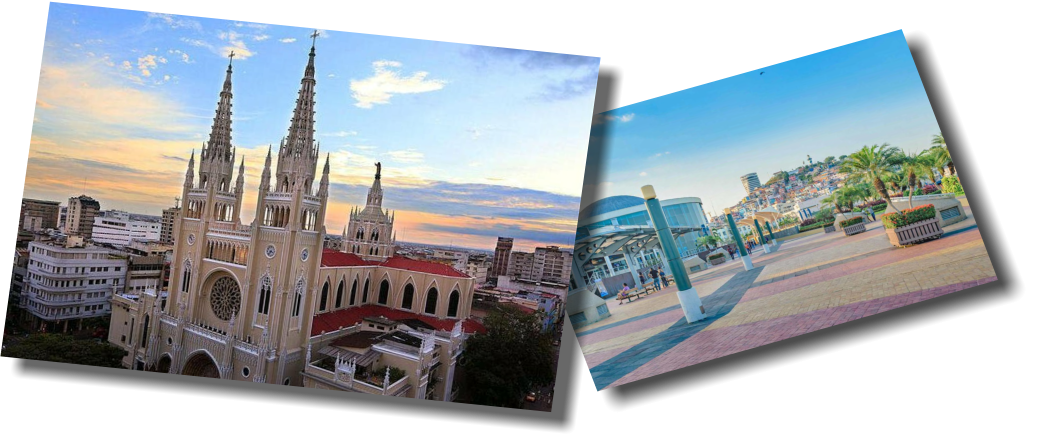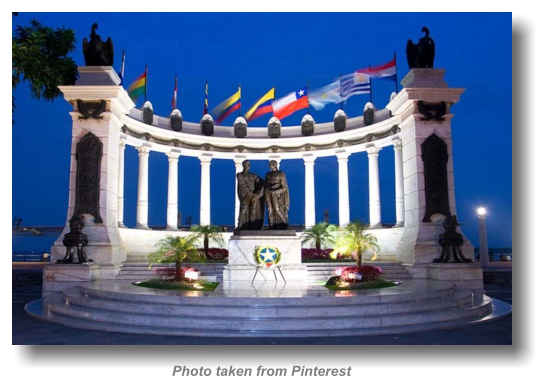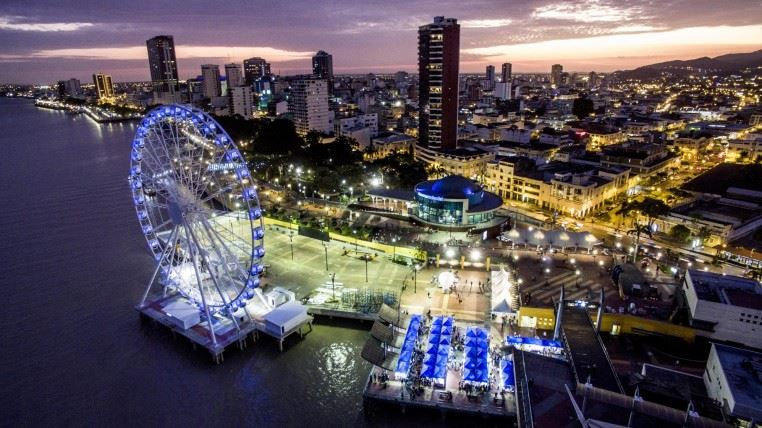


Amazonian Country Located at he heart of the Equatorial Line

©1996 el-ecuador.com - All rights reserved. - This Web site was created and maintained by: Fernando Silva
This site was last updated on: March 16, 2025

Guayas
Guayaquil
Guayaquil, pearl of the Pacific is the capital of the Guayas Province, founded on July 25, 1538 on the western bank of the
Guayas River by Francisco de Orellana, 45 miles upstream from the Gulf of Guayaquil in the Pacific Ocean. Santiago de
Guayaquil is the largest city and port in Ecuador, and is a low-lying city with a hot and humid climate, with an average
temperature of 23 °C.
Known as a gateway to Pacific beaches and the Galapagos Islands. Guayaquil It is the most populated city of the Republic
of Ecuador and stretches along the Guayas River, with an estimated 2,723,000 inhabitants that occupy an approximate
area of 344.5 km². Home to La Rotonda monument. In the north, Las Peñas is a neighborhood full of colorful houses. Stairs
lined with cafes and art galleries lead up Santa Ana Hill, site of Santa Ana chapel, a lighthouse and views of the city.
The region where Guayaquil is located has very fertile soils that allow an abundant and varied agricultural and livestock
production. Cotton, oil seeds, sugar cane, rice, bananas, cocoa and coffee and tropical fruits such as mango, passion fruit
(the world's leading exporters), papaya, melons and many more.
Guayaquil plays an important role in the economy of Ecuador, with its international and internal trade, it is economically the
most important city in the country.
Guayaquil is most definitely worth visiting, and indeed it is visited every day by thousands of people who come to this
cheerful and warm city:
•
Guayaquil Historical Park
•
Lake Park National Recreation Area
•
Puerto Hondo
•
Cerro Blanco Protected Forest
•
Santa Ana Hill
•
Seminar Park
•
Metropolitan Cathedral of Guayaquil
•
Samanes Park
La Rotonda, Along the Guayas river we find the Chamber
of the Rotonda, it was inaugurated in 1938. This
monument was created to commemorate the famous
"Guayaquil Interview", held on July 26, 1822 by the
liberators Simón Bolívar (representing Gran Colombia)
and José de San Martín (representing Perú).
This is an iconic historical monument that is located on the
Malecón 2000 in Guayaquil.


The Province of Guayas is located in the coastal region of the country, to the southwest of it. Its capital is the city of
Guayaquil, Sebastián de Belalcázar after founding San Francisco de Quito, decided to conquer another city on the coast
with the name of Santiago, however he could not because the Huancavilcas, a warrior culture, were in that place. According
to a traditional legend, the chief Guayas did not allow the Spanish to conquer them.
After a bloody fight, the Spanish captured the cacique Guayas and his wife Quil. It is then that the cacique decided to end
his life and that of his wife Quil. It was Francisco de Orellana who, on the day of the apostle Santiago, and in memory of the
heroic cacique Guayas and his wife Quil, founded the city under the name of Santiago de Guayaquil.
Guayas natural terrain is diverse, the province it´s mostly flat, except for the coastal side, which starts in Guayaquil and
goes to Manabí. The most important river in the province is the Daule River,
In the city of Guayaquil, the Daule river joins the Babahoyo River, forming the Guayas River. Which is a major river in
western Ecuador, The Guayas River has the largest watershed in South America west of the Andes mountains.

























